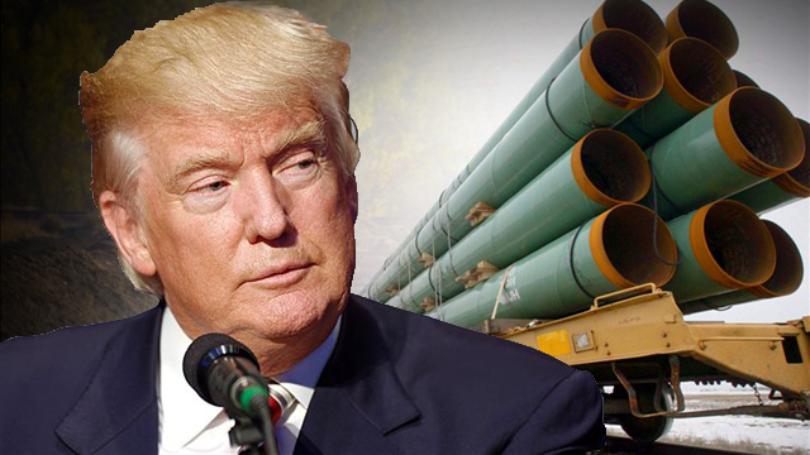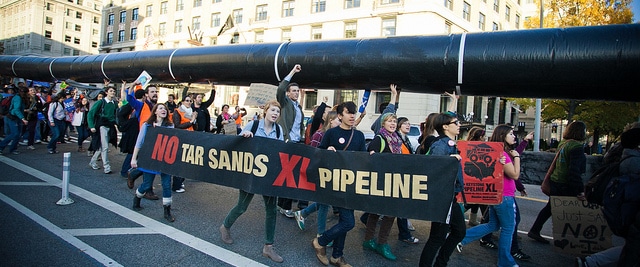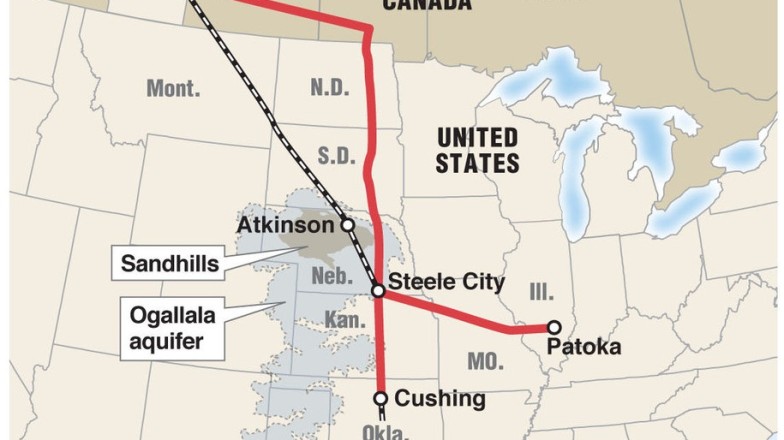Trump advances Keystone Pipeline
The Keystone XL pipeline. What is there left to say? It seems it’s been talked about endlessly for a decade, and that’s probably because it has. It’s even come up once or twice here. After years of back and forth, the Obama administration effectively killed the construction of the pipeline a bit more than a year ago because of environmental concerns. Well, if you haven’t heard, there is a new sheriff in town, and it appears things will be a bit different.
One of President Trump’s first actions was to revive consideration for the Keystone XL pipeline and the, possibly even more controversial, Dakota Access pipeline.
It’s important to note, these executive orders mean “both pipeline projects would be subject to renegotiation” rather than just an “all clear” to begin construction.
Naturally, many are rather displeased with this, and one can expect this to only reignite the controversy rather than end it.
If you’re unfamiliar with the Keystone pipeline story or just forgot some details because it has dragged on for a very long time, the Associate Press put together a handy timeline of some of its more notable events:
A short history of the Keystone Pipeline
2008
March 2008 — The U.S. State Department issues a presidential permit for a $5.2 billion Keystone pipeline to transport crude oil.
September 2008 — TransCanada files paperwork to expand the existing Keystone pipeline with a new Keystone XL route. The pipeline would extend from Canada’s tar sands through Montana, South Dakota and Nebraska, where it would connect with the existing Keystone pipeline route to carry more than 800,000 barrels of crude oil a day to specialized refineries along the Texas Gulf Coast.
The original Keystone pipeline route runs through North Dakota, South Dakota, Nebraska, Kansas, Oklahoma and Texas. Because the Keystone XL would cross the U.S. border, the State Department must determine whether the project is in the national interest.

2010
June 2010 — First Keystone pipeline goes into operation.
2011
August 2011 — Then-Nebraska Gov. Dave Heineman sends a letter to President Barack Obama asking that the proposed Keystone XL pipeline avoid the Sandhills, an area consisting of fragile, grass-covered sand dunes in western Nebraska.
Aug. 26, 2011 — The U.S. State Department issues its final environmental impact statement determining “there would be no significant impacts to most resources along the proposed project corridor.”
Oct. 15, 2011 — As the permit is reviewed, then-Secretary of State Hillary Rodham Clinton says the department is “inclined” to approve project. The project begins to galvanize the environmental movement to pressure the Obama administration to act on climate change. Republicans and other project supporters argue the project will create jobs and help the economy.
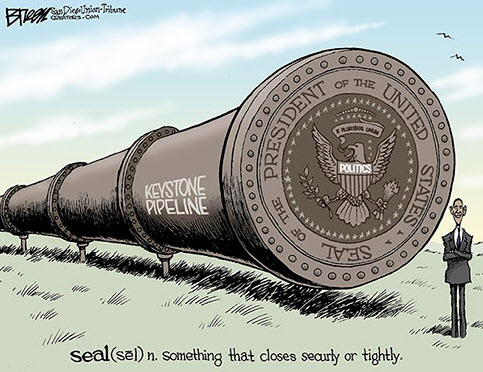
November 2011 — Amid growing public resistance to the Keystone XL, Heineman calls lawmakers into a special session to address environmental concerns in Nebraska. Lawmakers approve a pipeline siting law that requires companies to apply through an independent state commission. Obama announces a delay, pushing off the decision until after his re-election campaign. His administration says other potential routes through Nebraska need to be studied.
Dec. 23, 2011 — Congress tries to force Obama’s hand by passing legislation requiring approval of the Keystone XL pipeline within 60 days unless the president determines the project does not serve the national interest. Weeks later, Obama rejected the application but allowed TransCanada to re-apply.
2012
April 2012 — Nebraska lawmakers rewrite the pipeline law to give the governor the power to approve the Keystone XL route through the state.
May 4, 2012 — TransCanada reapplies and restarts the federal review process.
2013
March 1, 2013 — The State Department issues an environmental review that raises no major objections to the Keystone XL oil pipeline and says other options to get oil from Canada to Gulf Coast refineries are worse for climate change.
June 25, 2013 — Obama declares he will only approve the project if it doesn’t worsen carbon pollution.
“Our national interest would be served only if this project does not significantly exacerbate the problem of carbon pollution,” Obama says in a speech declaring that fighting climate change will be a major priority his second term.
2014
Jan. 31, 2014 — The State Department releases another final environmental impact statement, again voicing no major environmental objections to the project.
Feb. 19, 2014 — A Nebraska judge overturns the state law that allowed the pipeline, throwing the project into legal limbo.
April 18, 2014 — The State Department announces it is again delaying its review, citing the legal dispute over the Nebraska route.
2015
January 2015 — TransCanada files legal papers in nine Nebraska counties to invoke eminent domain for the land that’s needed to construct, operate and maintain the pipeline.
Feb. 11, 2015 — Congress again tries to push the Obama administration to decide on the permit by passing legislation forcing the decision and sending it to the White House. Obama vetoes the bill days later.
Sept. 22, 2015 — Clinton, now seeking the Democratic nomination for president, says she opposes construction of the Keystone pipeline.
Nov. 2, 2015 — As it appears increasingly likely that Obama will reject the pipeline, TransCanada asks the administration to suspend the company’s application. The State Department reviews the request for a day, and then rejects it.
Nov. 6, 2015 — Obama announces he is rejecting the permit to build the Keystone pipeline.
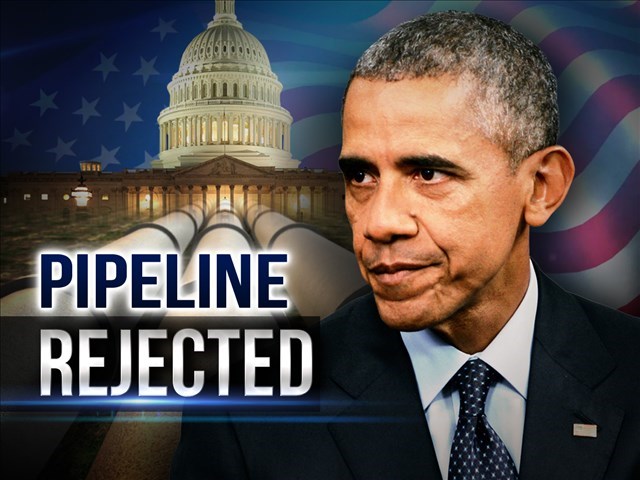
The project is not in the national interest, he says. “America is now a global leader when it comes to taking serious action to fight climate change. And frankly, approving this project would have undercut that global leadership,” he says.
2016
June 2016 — TransCanada seeks $15 billion in damages from the federal government in response to the Obama administration rejecting the Keystone XL pipeline.
2017
Jan. 24, 2017 — President Donald Trump signs executive actions to advance the construction of the Keystone XL pipeline, along with the four-state Dakota Access oil pipeline.

 USA / EN
USA / EN Middle East
Middle East México / Espanol
México / Espanol